- Clone
- MI15 (See other available formats)
- Regulatory Status
- RUO
- Workshop
- HCDM listed
- Other Names
- B-B4
- Isotype
- Mouse IgG1, κ
- Ave. Rating
- Submit a Review
- Product Citations
- publications
CD138, a member of the syndecan protein family, is a type I integral membrane heparin sulfate proteoglycan also known as Syndecan-1. Syndecan-1 participates in cell proliferation, cell migration, and cell-matrix adhesion via interaction with collagen, fibronectin, and other soluble molecules (such as FGF-basic). It is expressed on normal and malignant human plasma cells, pre-B cells, epithelial cells, and endothelial cells, but not on mature circulating B-lymphocytes. It is also expressed on some non-hematopoietic cells, including embryonic mesenchymal cells, vascular smooth muscle cells, endothelial cells, and neural cells.
Product DetailsProduct Details
- Verified Reactivity
- Human
- Antibody Type
- Monoclonal
- Host Species
- Mouse
- Immunogen
- A mixture of U266 and XG-1 human myeloma cell lines.
- Formulation
- Phosphate-buffered solution, pH 7.2, containing 0.09% sodium azide
- Preparation
- The antibody was purified by affinity chromatography and conjugated with Spark Red™ 718 under optimal conditions.
- Concentration
- 0.2 mg/mL
- Storage & Handling
- The antibody solution should be stored undiluted between 2°C and 8°C, and protected from prolonged exposure to light. Do not freeze.
- Application
-
FC
- Recommended Usage
-
Flexi-Fluors™ are provided at a standard 0.2 mg/mL concentration. We recommend titrating this reagent to determine the optimal concentration for each application. For many flow cytometry applications, conjugated antibodies perform well at concentrations ranging from 0.03 to 1.0 µg per million cells in 100 µL. We recommend testing a range of concentrations starting from 10 µg/mL.
For example, make five 1:1 serial dilutions of the 0.2 mg/mL antibody. Add 5 µL of each dilution (including the undiluted antibody) to 100 µL of cells (at 107 cells/mL) to test six concentrations -- 1.0, 0.5, 0.25, 0.125, 0.06, and 0.03 µg per million cells in 100 µL volume. Compare staining patterns or create a titration curve using the MFI or staining index to determine the optimal concentration. - Excitation Laser
-
Red Laser (633 nm)
- Application Notes
-
The epitope recognized by MI15 is found within the ectodomain of the CD138 core protein. It has been reported that MI15 blocks the binding of clone B-B4 but not clone DL-101 by flow cytometric analysis. Clones DL-101 and MI15 exhibit differential staining patterns on in vitro generated plasma cells and some CD138+ cell lines.4
Additional reported applications for the relevant formats include: immunofluorescent staining1, Western blotting2, immunohistochemical staining of formalin-fixed paraffin-embedded frozen tissue sections3, and spatial biology (IBEX)5,6. - Additional Product Notes
-
For more information about Flexi-Fluors™, visit our Flexi-Fluor™ page and review FAQs associated with this product line.
- Application References
-
- Costes V, et al. 1999. Hum. Pathol. 30:1405. (IF)
- Gattei V, et al. 1999. Br. J. Haematol. 104:152. (WB)
- Bologna-Molina R, et al. 2008. Oral Oncol. 44:805. (IHC)
- Itoua MR, et al. 2014. Biomed. Res. Int. 2014:536482.
- Radtke AJ, et al. 2020. Proc Natl Acad Sci USA. 117:33455-33465. (SB) PubMed
- Radtke AJ, et al. 2022. Nat Protoc. 17:378-401. (SB) PubMed
Antigen Details
- Structure
- 100-200 kD type I integral transmembrane glycoprotein
- Distribution
-
Plasma cells, pre-B cells, epithelial cells, endothelial cells
- Function
- Adhesion, controls cell morphology, regulates cell growth
- Ligand/Receptor
- FGFb, collagen, fibronectin
- Cell Type
- B cells, Endothelial cells, Epithelial cells, Plasma cells
- Biology Area
- Cell Adhesion, Cell Biology, Cell Motility/Cytoskeleton/Structure, Immunology, Neuroscience, Synaptic Biology
- Molecular Family
- Adhesion Molecules, CD Molecules
- Antigen References
-
1. Sanderson RD, et al. 1992. Cell. Regul. 1:27.
2. Zola H, et al. 2007. Leukocyte and Stromal Cell Molecules: The CD Markers. Wiley-Liss A John Wiley & Sons Inc, Publication. - Gene ID
- 6382 View all products for this Gene ID
- UniProt
- View information about CD138 on UniProt.org
Related FAQs
- What are Flexi-Fluors?
-
Flexi-Fluors are rapidly made-to-order conjugated antibodies. The technology, manufacturing processes, and specifications used to create Flexi-Fluors are the same as our regular catalog products. However, the optimal concentration and performance of each Flexi-Fluor must be determined by the customer.
- How quickly will I receive my order?
-
We aim to ship Flexi-Fluors within 2-3 weeks of receipt of your order. However, depending on your location, shipping times may vary.
- How are Flexi-Fluors different from regular catalog products?
-
Flexi-Fluors are made on demand, specifically for you. Flexi-Fluors are manufactured using the same high-quality standards, and specifications as other catalog products. For faster delivery, Flexi-Fluors are not tested by flow cytometry to determine optimal concentrations or evaluate performance. This testing needs to be performed by the customer.
- How do I determine the optimal concentration for using my Flexi-Fluor? How should I titrate my antibody?
-
Flexi-Fluors are provided at a standard 0.2 mg/mL concentration. We recommend that you titrate your antibody to determine the optimal concentration to use for your application. For many flow cytometry applications, conjugated antibodies perform well at concentrations ranging from 0.03 to 1.0 µg per million cells in 100 µL volume. We recommend that you test a range of concentrations starting from 10 µg/mL.
For example, make five 1:1 serial dilutions of your 0.2 mg/mL antibody. Add 5 µL of each dilution (including the undiluted antibody) to 100 µL of cells (at 107 cells/ml) to test six concentrations - 1.0, 0.5, 0.25, 0.125, 0.06, and 0.03 µg per million cells in 100 µL volume. Compare staining patterns or create a titration curve using the MFI or staining index to determine the optimal concentration.
- I can’t find the antibody-dye combination that I need. When will it be available?
-
We continuously update our catalog, introducing scores of new products every month. Please get in touch with our Technical Service team for an update on new products or recommendations for suitable alternatives to complete your panel. Or contact Custom Solutions to inquire about our affordable custom conjugation services.
- I need help to validate the performance of my Flexi-Fluor. Who should I contact?
-
Please get in touch with Technical Service for assistance.
- Can I order more than 50 μg of a Flexi-Fluor?
-
Yes, you can order multiple vials of the same Flexi-Fluor products. We cannot guarantee, however, that these vials will be bottled from the same lot. For bulk single-lot orders, contact our Custom Solutions team.
- What is the expiration date of my Flexi-Fluor?
-
Expiration dates can be found on the vial label or by using our CoA lookup tool.
Other Formats
View All CD138 Reagents Request Custom ConjugationCompare Data Across All Formats
This data display is provided for general comparisons between formats.
Your actual data may vary due to variations in samples, target cells, instruments and their settings, staining conditions, and other factors.
If you need assistance with selecting the best format contact our expert technical support team.
-
PE anti-human CD138 (Syndecan-1)

Human myeloma cell line U266 was stained with CD138 (clone M... 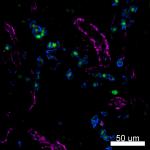
Confocal image of human lymph node sample acquired using the... 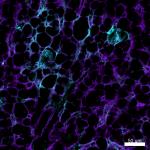
Confocal image of human liver sample acquired using the IBEX... 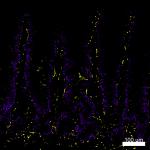
Confocal image of human jejunum sample acquired using the IB... -
Purified anti-human CD138 (Syndecan-1)
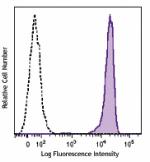
Human myeloma cell line U266 was stained with purified CD138... 
SeqIF™ (sequential immunofluorescence) staining on COMET™ of... -
APC anti-human CD138 (Syndecan-1)

Human myeloma cell line U266 was stained with CD138 (clone M... -
FITC anti-human CD138 (Syndecan-1)

Human myeloma cell line U266 was stained with CD138 (clone M... -
PerCP/Cyanine5.5 anti-human CD138 (Syndecan-1)
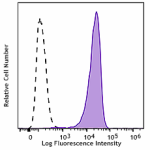
Human myeloma cell line U266 was stained with CD138 (Syndeca... -
Alexa Fluor® 700 anti-human CD138 (Syndecan-1)

Human myeloma cell line U266 was stained with CD138 (clone M... -
PE/Cyanine7 anti-human CD138 (Syndecan-1)
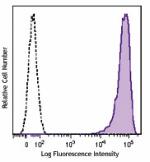
Human myeloma cell line U266 was stained with CD138 (clone M... -
Brilliant Violet 421™ anti-human CD138 (Syndecan-1)

Human myeloma cell line U266 was stained with CD138 (clone M... -
Brilliant Violet 510™ anti-human CD138 (Syndecan-1)
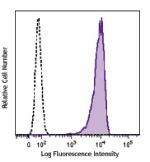
Human myeloma cell line U266 was stained with CD138 (clone M... -
Brilliant Violet 605™ anti-human CD138 (Syndecan-1)

Human myeloma cell line U266 was stained with CD138 (clone M... -
Brilliant Violet 711™ anti-human CD138 (Syndecan-1)

Human myeloma cell line U266 was stained with CD138 (clone M... -
Alexa Fluor® 647 anti-human CD138 (Syndecan-1)

Human myeloma cell line U266 was stained with CD138 (clone M... 
Confocal image of human skin sample acquired using the IBEX ... 
Confocal image of human metastatic lymph node sample acquire... -
Alexa Fluor® 594 anti-human CD138 (Syndecan-1)
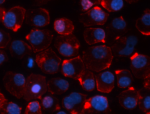
U266B1 cells were fixed with 2% paraformaldehyde (PFA) for t... -
PE/Dazzle™ 594 anti-human CD138 (Syndecan-1)
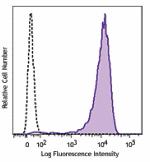
Human myeloma cell line U266 was stained with CD138 (clone M... -
APC/Cyanine7 anti-human CD138 (Syndecan-1)
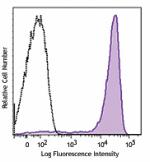
Human myeloma cell line U266 was stained with CD138 (clone M... -
Pacific Blue™ anti-human CD138 (Syndecan-1)
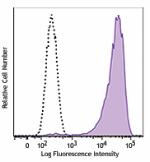
Human myeloma cell line U266 was stained with Pacific Blue™ ... -
TotalSeq™-A0055 anti-human CD138 (Syndecan-1)
-
Brilliant Violet 785™ anti-human CD138 (Syndecan-1)
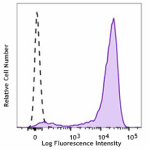
Human myeloma cell line U266 was stained with CD138 (clone M... -
Biotin anti-human CD138 (Syndecan-1)
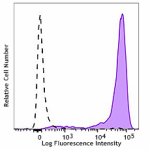
Human myeloma cell line U266 was stained with CD138 (Syndeca... -
TotalSeq™-C0055 anti-human CD138 (Syndecan-1)
-
APC/Fire™ 750 anti-human CD138 (Syndecan-1)
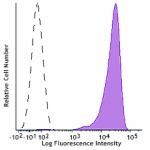
Human myeloma cell line U266 was stained with CD138 (Syndeca... -
TotalSeq™-B0055 anti-human CD138 (Syndecan-1)
-
PE/Cyanine5 anti-human CD138 (Syndecan-1)
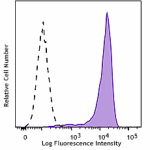
U266 (human myeloma cell line) cells were stained with anti-... -
TotalSeq™-D0055 anti-human CD138 (Syndecan-1)
-
PE/Fire™ 640 anti-human CD138 (Syndecan-1)
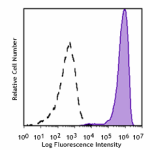
U266 cells were stained with anti-human CD138 (Syndecan-1) (... -
Spark Violet™ 500 anti-human CD138 (Syndecan-1)
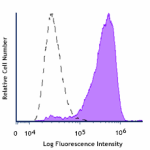
Human myeloma cell line U266 was stained with anti-human CD1... -
FITC anti-human CD138
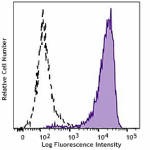
Typical results from human myeloma cell line U266 stained ei... -
PE/Fire™ 700 anti-human CD138 (Syndecan-1)
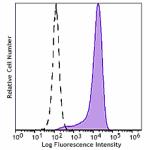
U266 cells were stained with anti-human CD138 (Syndecan-1) (... -
Spark Violet™ 423 anti-human CD138 (Syndecan-1)
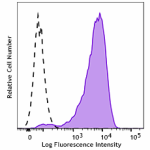
Human myeloma cell line U266 was stained with anti-human CD1... -
Spark Red™ 718 anti-human CD138 (Syndecan-1) (Flexi-Fluor™)
 Login / Register
Login / Register 













Follow Us